Review and photos by Bokisaurus
Part 4 of Kaiyodo Dinoland Natural History review series
Anchiceratops is one of those dinosaurs that seems to have been forgotten in today’s popular culture. Despite being large and having a unique frill, you don’t really hear much about it, let alone see it in documentaries about dinosaurs, or even a short cameo in movies. In fact it could be considered one of those classic ceratopsians like Triceratops, Styracosaurs, Centrosaurous, and Chasmosaurous that were once more well known in earlier decades.
But unlike the others that still maintain some level of popularity today, poor Anchiceratops seems to have vanished from the spotlight.
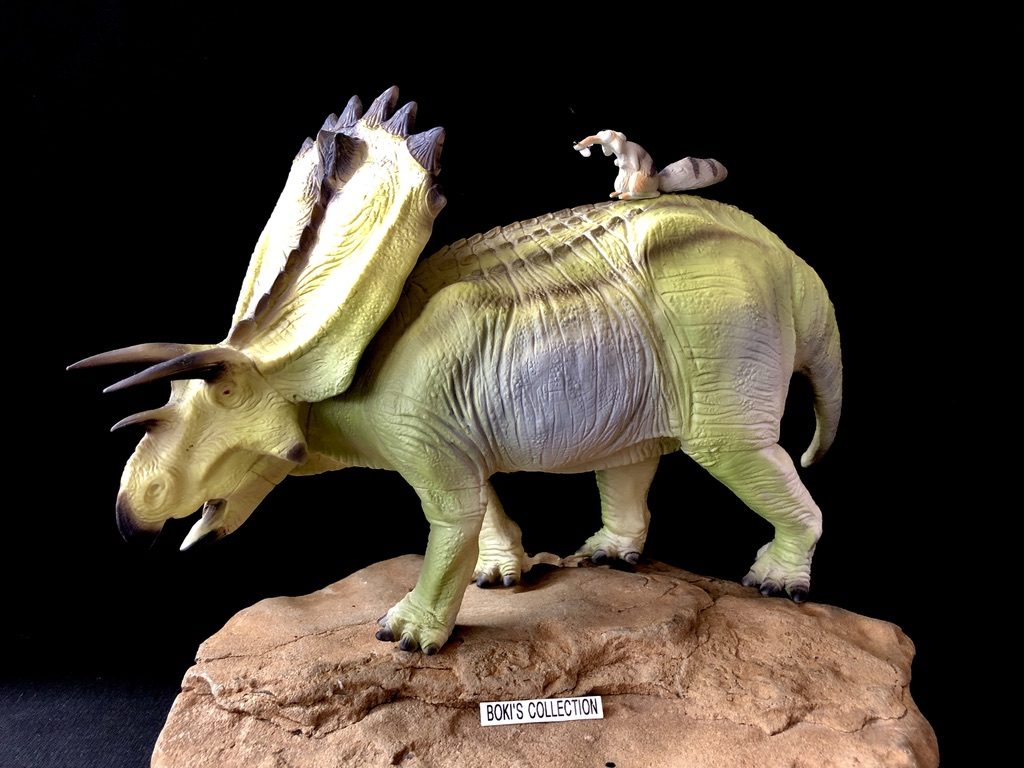
In the toy world, its presence barely register with only a few figure ever being made, one of them is this figure we are reviewing today. This figure is part of the Kaiyodo Dinoland Series of large hollow figures that were released way back in the 80’s and 90’s.
Sculpted by famed Japanese sculptor Kazunari Araki who is perhaps more know for his work with the Favorite line of prehistoric toy figures.
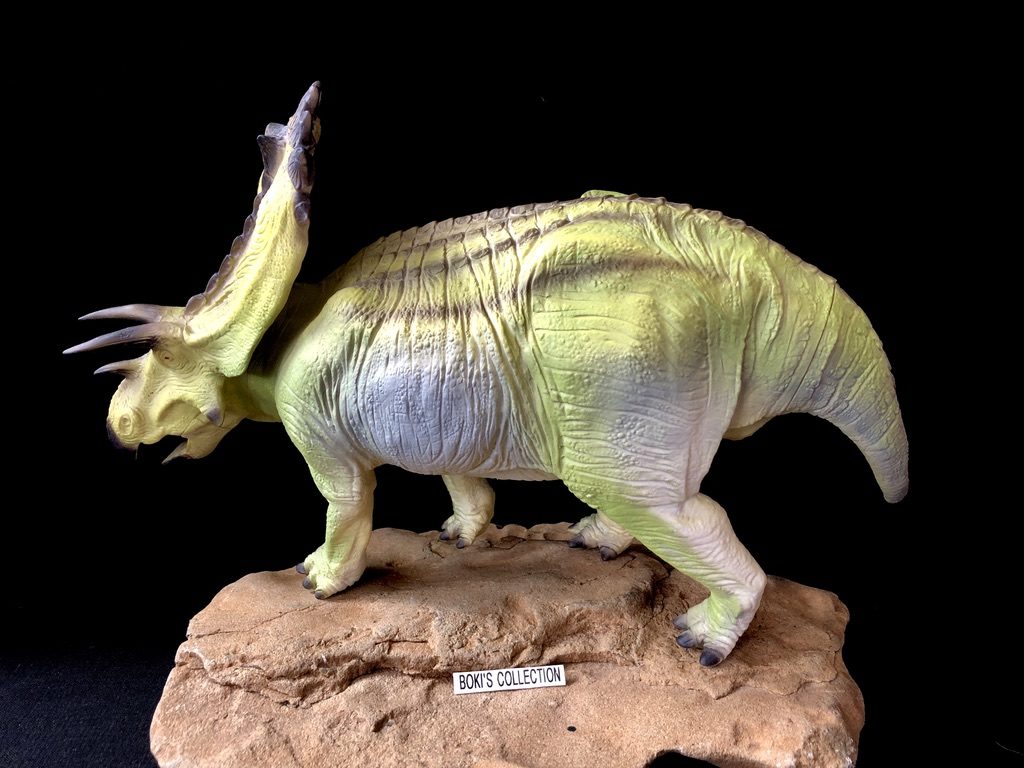
Anchiceratops ornatus (near horned face) is a large ceratopsians that belong to the group called Chasmosaurines. With a size estimate of 16’ feet in length, it is smaller that Triceratops, but still a pretty good size animal.
The figure is labeled as part of the 1:20 scale set and measures a good 16”inches long if stretched, and about 12” inches with the curvature of the the tail and neck. It stands 6” tall to the hips and 7” inches tall if measured from the ground up to the tip of the frill. The frill alone measure 3.5” tall and almost 4” at the widest point.
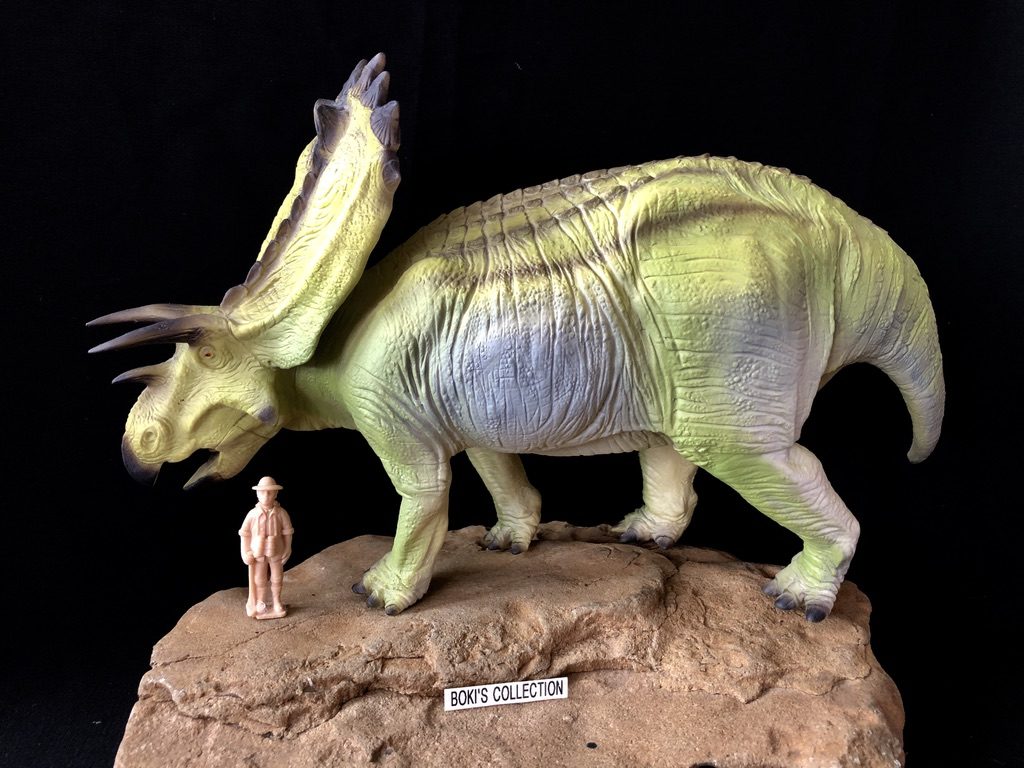
The most distinctive features of Anchiceratops is it large frill which is long and more square shaped and adorned with large flat spikes on the top. It also have a long snout.
On the figure, the frill looks tall and almost have a V shape when viewed head on. The side of the frill where we typically see spikes are smooth with no signs of knobs or spike. The absences of these epoccipital bones is puzzling. We only see these spikes when we reach the top of the frill.
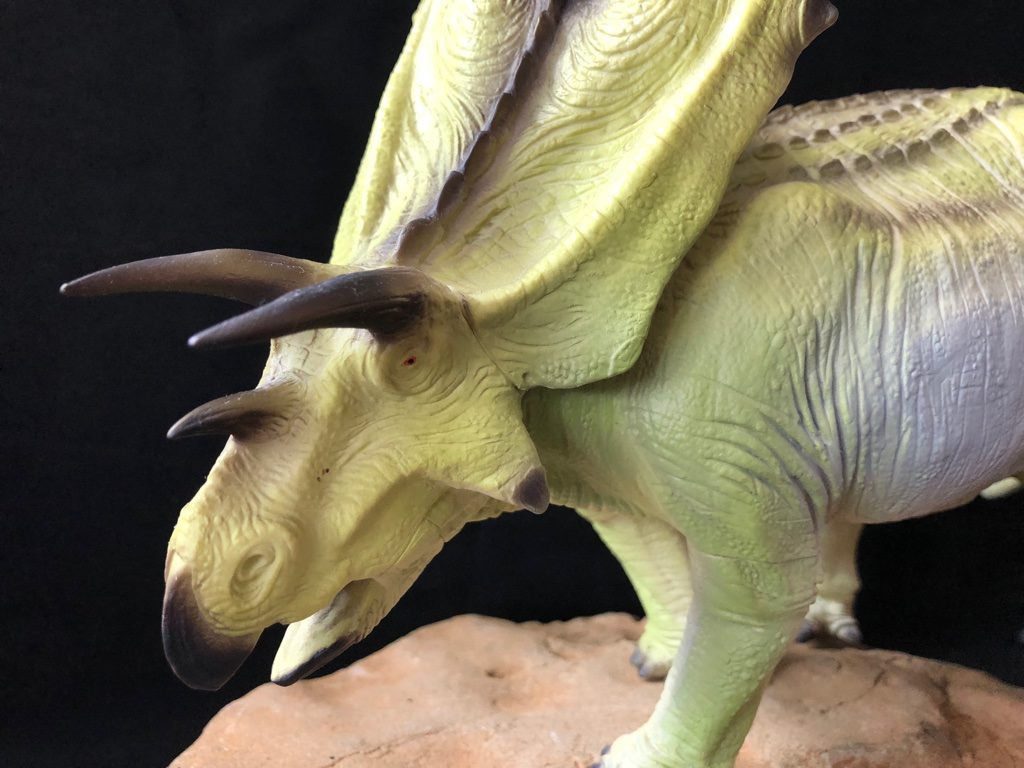
Here, on the top of the frill are several, eight of them to be exact, large, flat spikes that are of equal size with the exception of the first ones. There are nice texturing on these spikes, there are even growth rings visible. These spike are colored a charcoal gray.
Another distinctive feature of the frill is the pair of spikes located on either side of the frill’s midline, towards the top of the frill. The size of these spikes show some variations, and on the figure they are large knobs. In addition, there are what appears to be large osteoderms running the length of the midline starting just behind the brow horns all the way up to the pair of spikes on the top of the frill.
The frill is covered in many lines of various shapes and patters as well as some faint signs of scales.
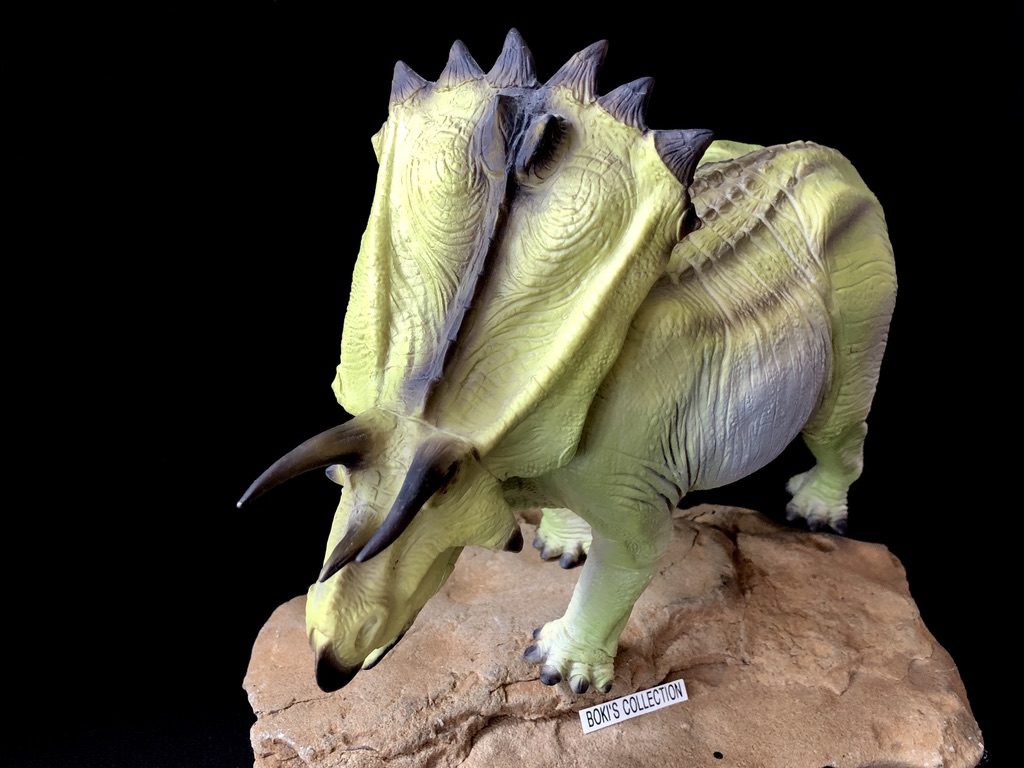
The two brow horns are long and points slightly downwards. The nose horn is short and follows the same orientation of the pair of brow horns. All of these horns, as well as the beak have the same charcoal gray color.
As expected and almost a signature of Araki’s sculpts, there are shrink-wrapping on the face, but not as bad as some of his sculpts. The snout is long and have lots of details and you can see nice muscle definitions.
The nostrils are large and flared. The mouth is open and you can see the tongue inside.
The eyes are small and are colored orange. Like the frill, the head is also covered in many small and delicate detains in the forms of line wrinkles of various shapes.
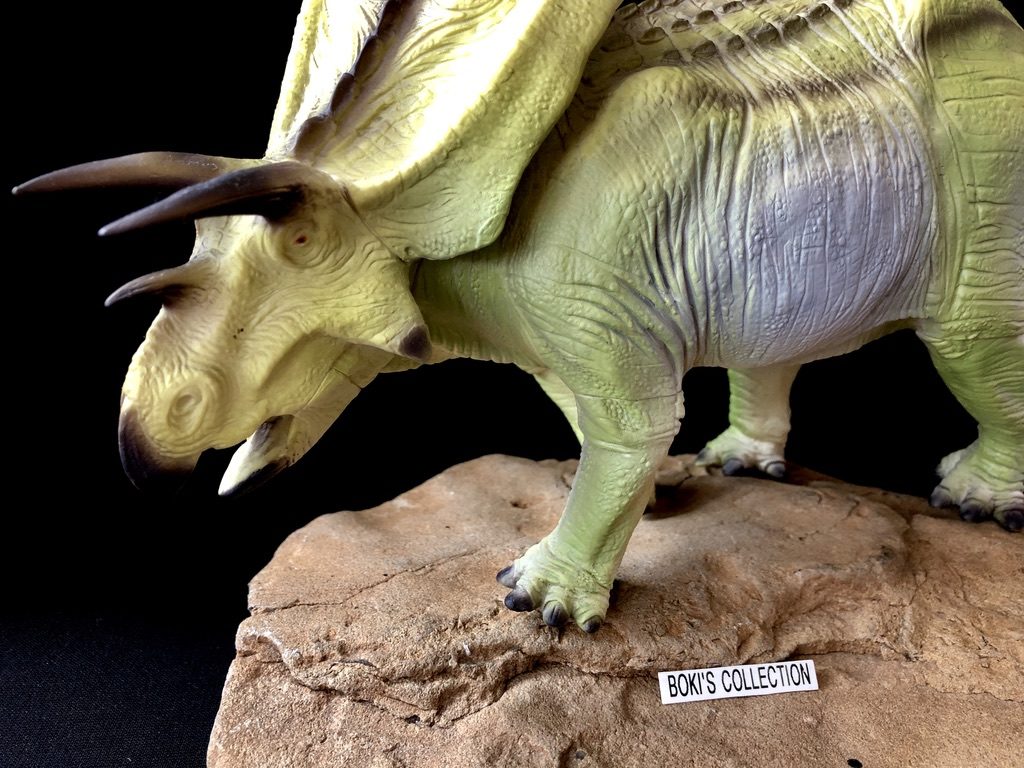
There was once a second species of Anchiceratops called A. longirostris that was based on having a more slender skull as well as horns that is oriented to point slightly downwards.
These variations in skull and horn orientation was later attributed to sexual dimorphism where the more robust skull and horns that oriented upwards to be that of the males.
With that in mind, it seems like this figure was based on the now debunked A. longirostris, so this makes our figure a female.
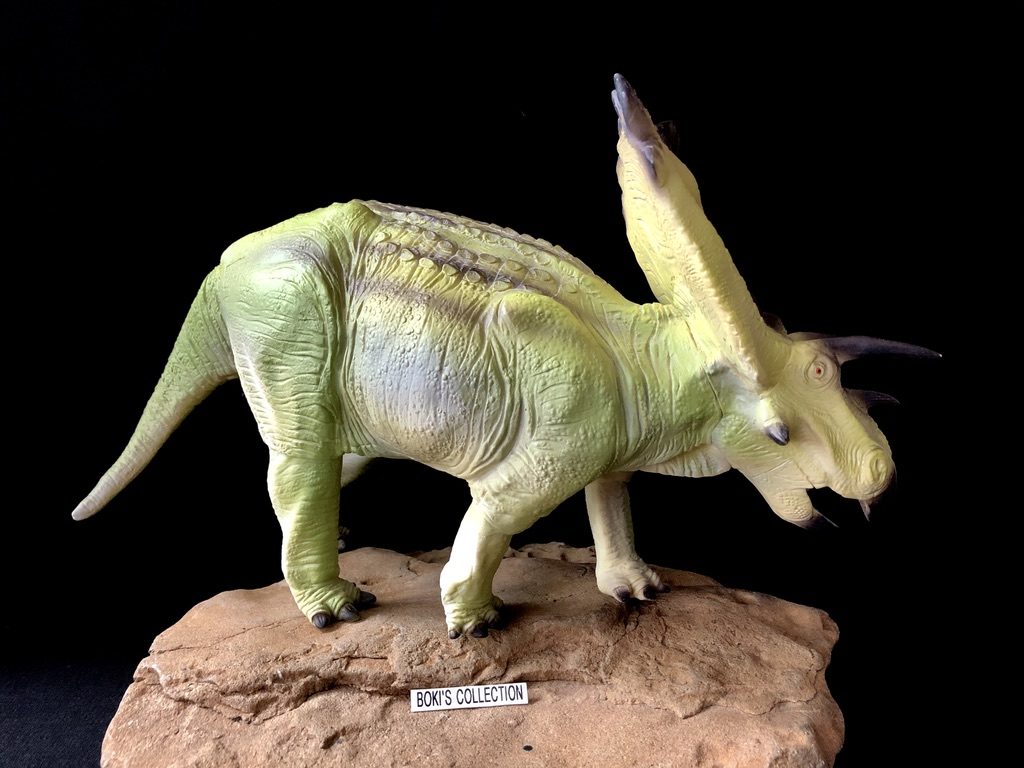
The figure is a robust one, by far the most filled out of the ceratopsians from the series, and definitely don’t have the signature skinny look commonly seen in many of Araki’s ceratopsian figures.
The body is solidly built and have lots of skin wrinkles and fold especially in the armpit and back region. In addition, there are also some clusters of scales and osteoderms scattered all over the body with concentrations on the belly and hips regions.
There are great muscle definitions on the shoulders and legs and really helps give a sense of how heavy and solidly built the animal was.
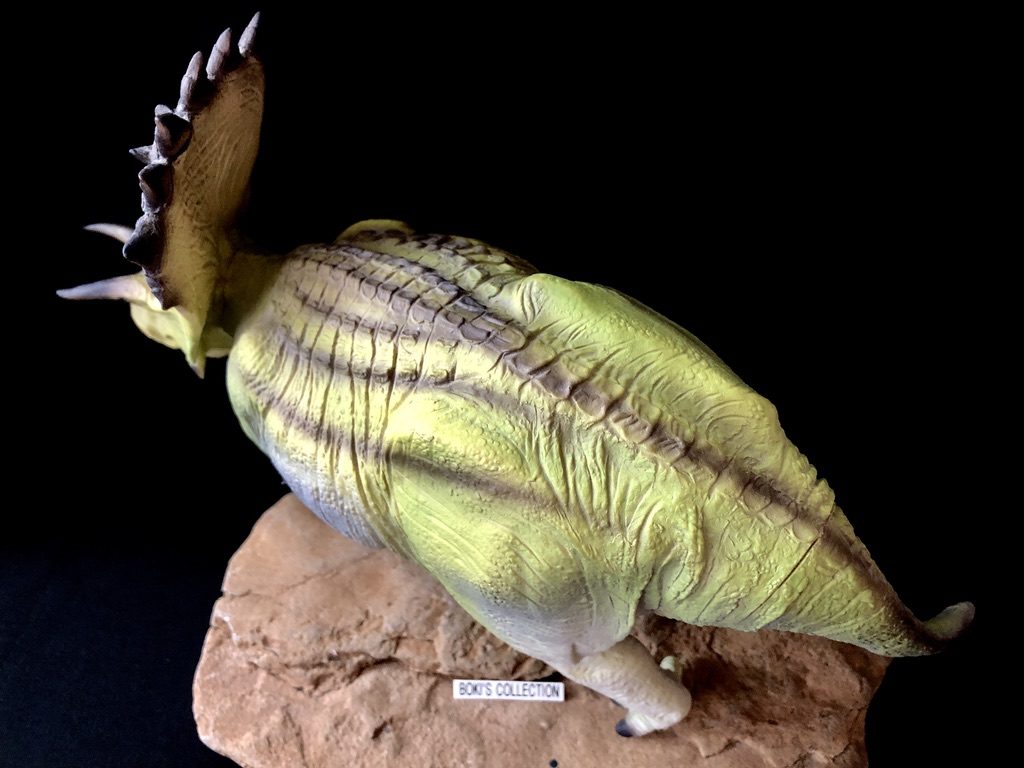
On the back, there are rows of large osteoderms that run along the spine, two of which converge with the row on the spine that then forms a single row all the way down the tail. The tail is long with a wide and muscular base. The tail is also very textured with lots of big skin folds that almost looks like rings, and on top of these folds are very distinct scales.
The legs are proportioned nicely. It is when we look at the front feet that we see the most obvious inaccurate feature of the figure.
All the front toes have large nails sculpted, painted, and very visible. It’s a common mistake that is seen in many of the older figures like this one.
Unfortunately, we still see this common mistake in some of today’s new ceratopsian figures.
These flaws aside, the figure is really nice.
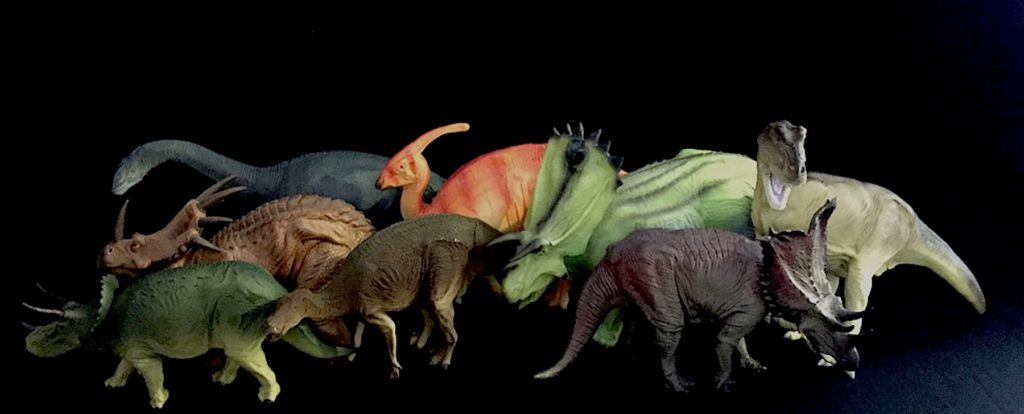
This is perhaps one of the more colorful figure from the series. All the figure from the Dinoland series are given such basic colors and paint job with very little in the way of patterns.
I supposed this is due to the fact that these models were originally sold as kits and were meant to be painted but he builder.
The overall body color is a light yellow-green from head to tail tip. The legs is a shade of green darker than the rest of the body. There is also a grayish tone that highlights the stomach, belly, and the thigh areas.
Bands of dark charcoal gray dissects the frill’s midline, these bands continues on the back as it outlines the large osteoderms. In-between these bands we see a lighter yellow highlights.
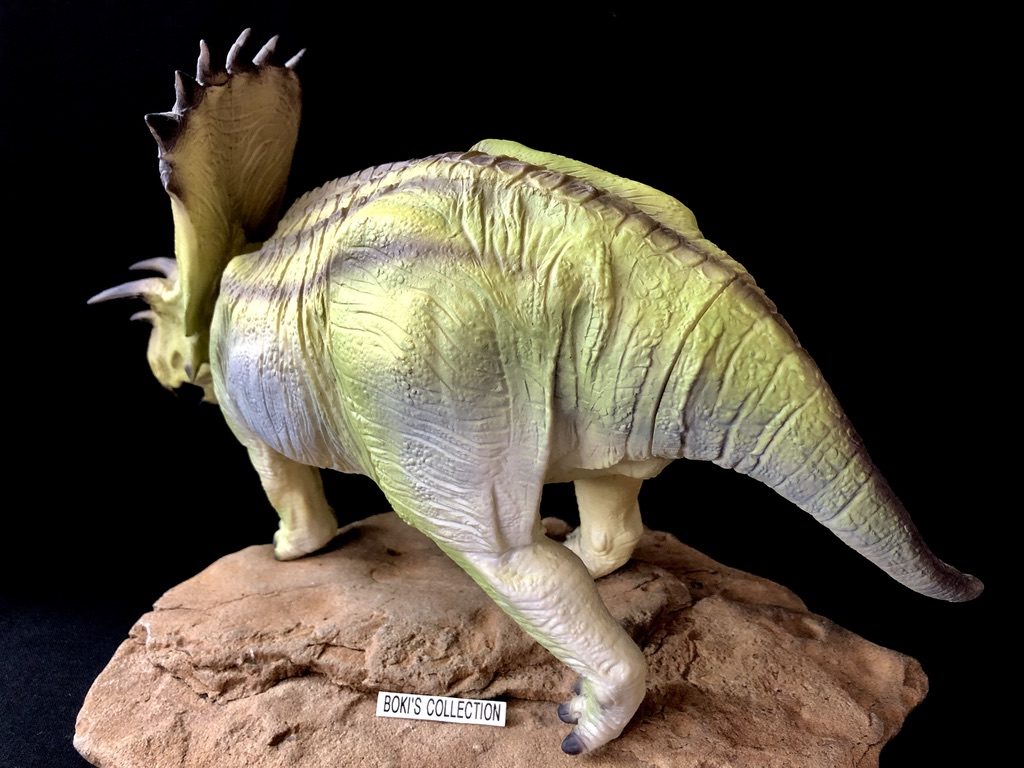
Anchiceratops lived in what is now Alberta, Canada in the Horseshoe Canyon Formation during the Late Cretaceous period.
During that time, the Western Interior Seaway already started it’s gradual withdrawal. The environment was a combination of lush floodplains and river deltas, lagoon and tidal flats.
It was a rich and diverse environment that was able to support large numbers of different dinosaur species.
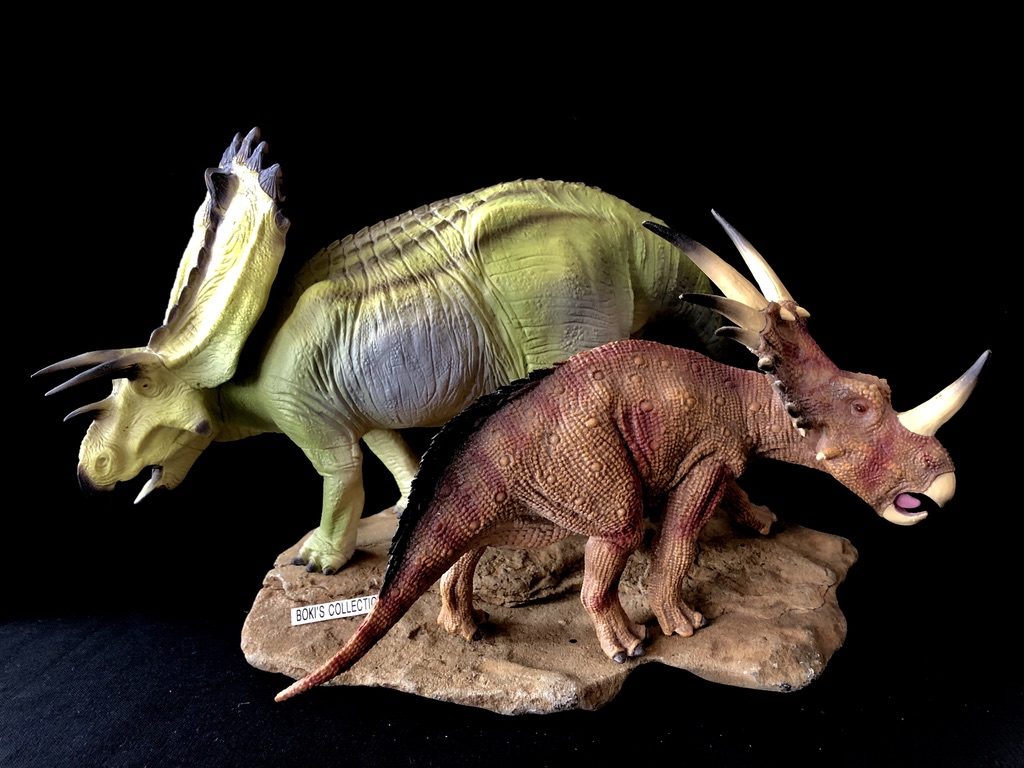
Like all of the Dinoland figure, this was also originally sold as a kit set where you have to assemble the parts.
Some were later released as already built up models, this was one of them. I don’t have talent or patience to build up a model, so I was happy to have some already built up figures available.
There are nine different pieces altogether: The head, lower jaw, frill, body, all four legs, and tail. For the most part, the seams fits nicely together especially on the body.
The only part that have some really visible seams is the area in which the frill attaches to the back of the head. There is also a little visible seam line on the tail area.
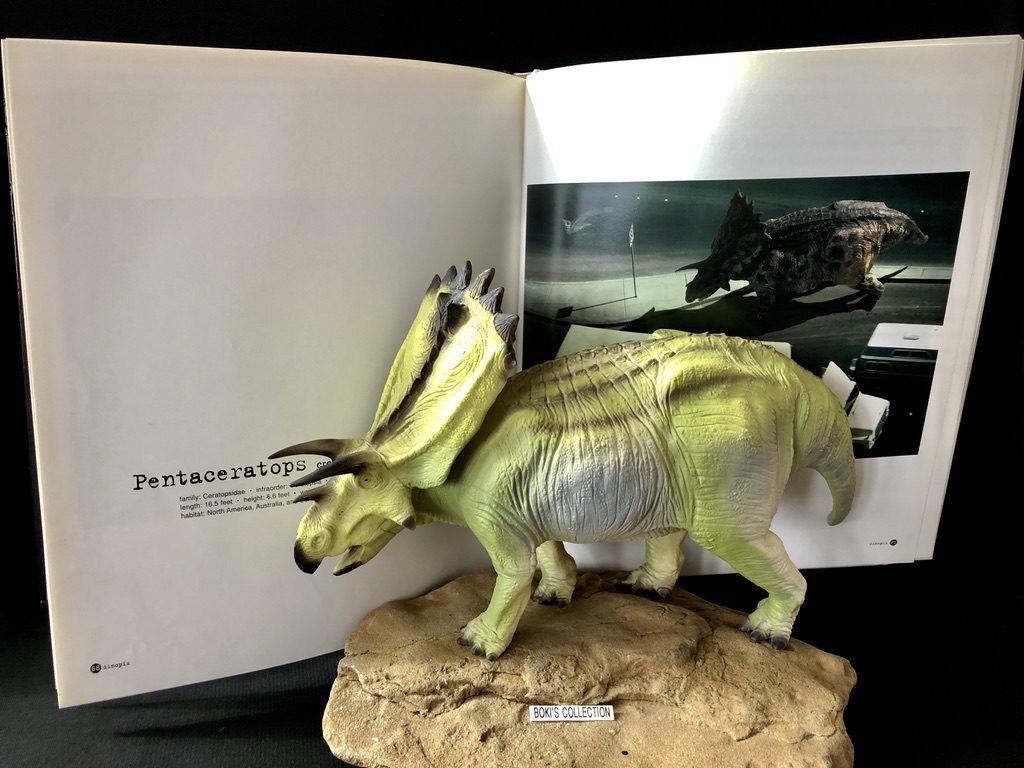
The model also made it to the pages of the photo essay book Dinopix by Terushisa Tajima. In the book, it had a different color, brown with dark spots.
It was photoshopped in a manmade environment surrounded by freight trucks as it tries to cross a busy street.
Unfortunately, it was labeled as Pentaceratops. The decision was perhaps to use a more famous name, poor Anchiceratops!
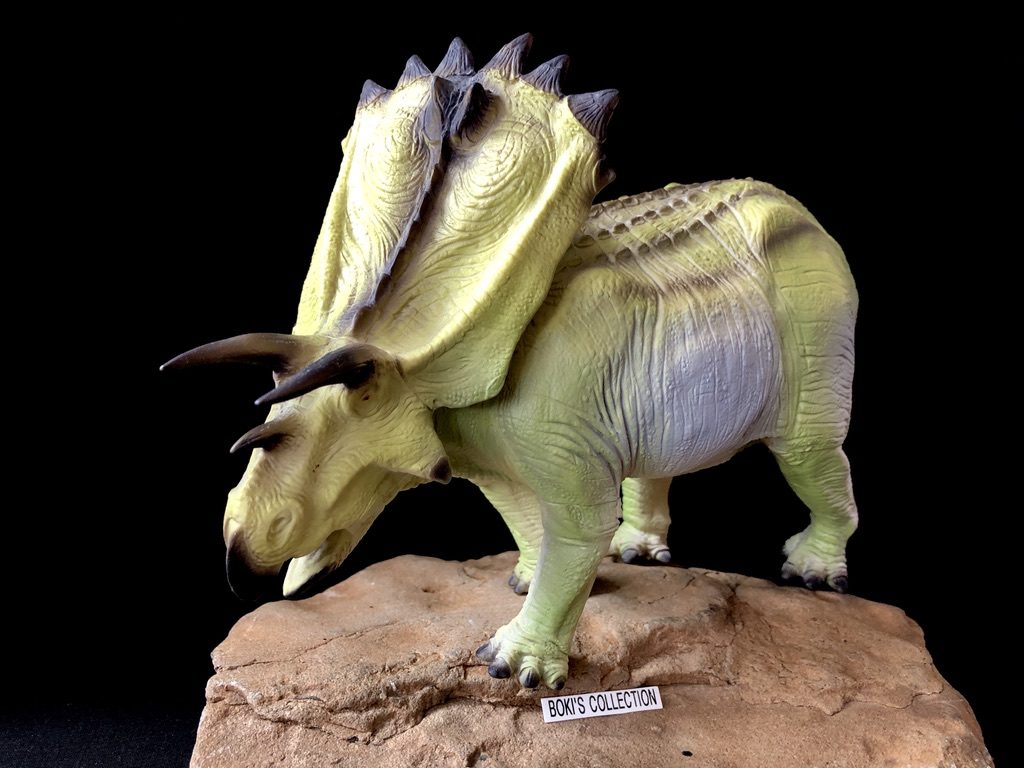
In closing, with the shortage of Anchiceratops figure, this is a welcome figure to add in any ceratopsian fans collection. It definitely shows its age, but it is still a beautiful model that is worth hunting down despite some inaccuracies.
Of the four ceratopsians in the series, this is my favorite, along with the Chasmosaurus we reviewed earlier.
It is a large figure that commands attention, but its large size can also be an issue if display space is at a premium. It goes well with other large figures (think early PNSO figures), but will dwarf your standard 1:40 figures.
I got my model years ago and it was an effort to find one at a reasonable price. I don’t know how easy they are to find these days, or even how much they go for (my guess is a lot). Ebay is perhaps your best place to find one.

Well, that concludes another review. My plan is to end the Kaiyodo Dinoland series by reviewing a fifth model, so stay tuned. Thanks for reading, I hope you found it enjoyable.
Until we meet again, take care and Cheers!
Disclaimer: links to Ebay and Amazon on the DinoToyBlog are affiliate links, so we make a small commission if you use them. Thanks for supporting us!



When my son was young, oh how he loved to play with all the dinosaurs! This Anchiceratops deserves this spotlight you’ve given him!
I wish that a current toy or collecting company made an anchiceratops of that quality
It is a ceraptoside that has not done enough justice.
Nice to finally see another Anchiceratops toy!